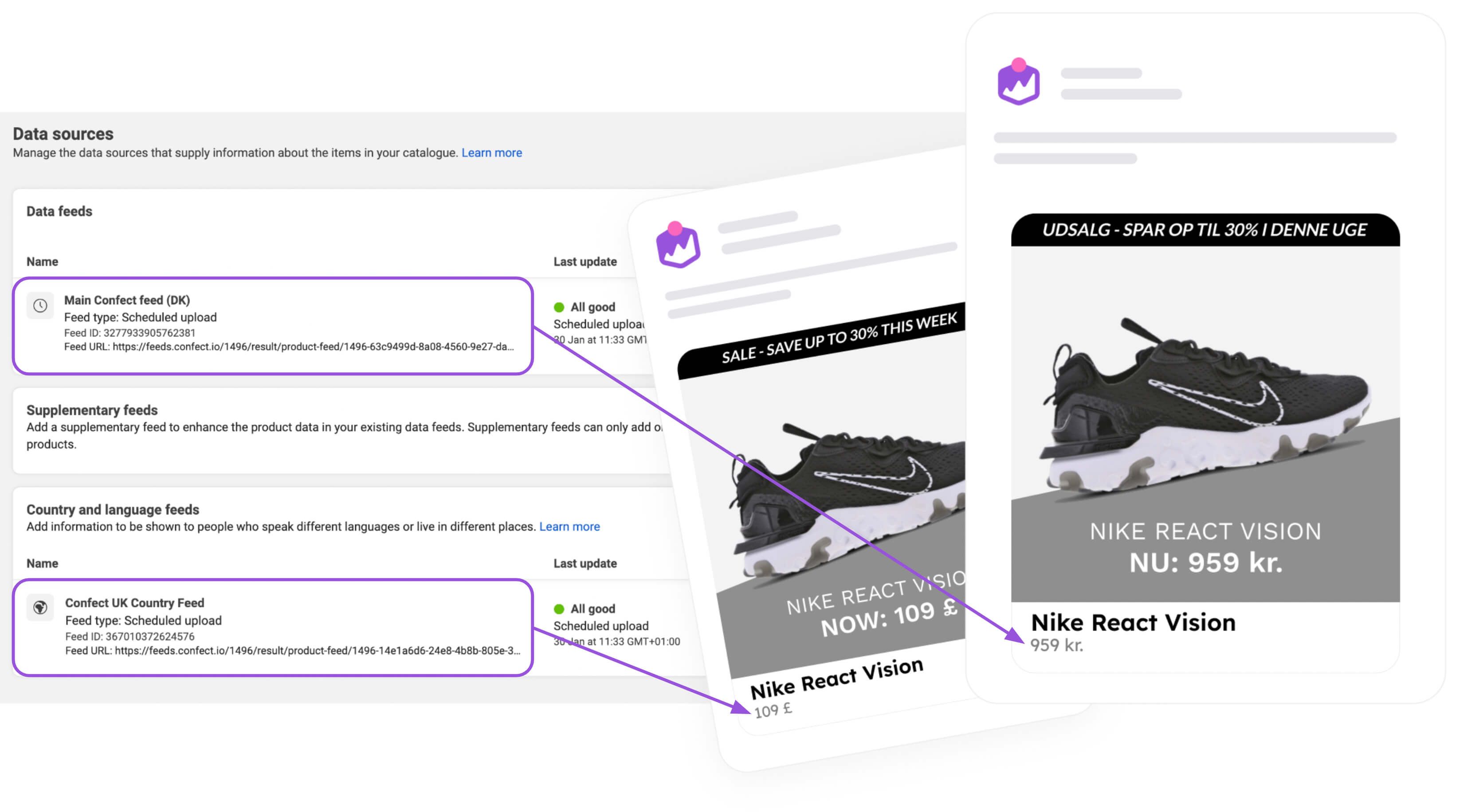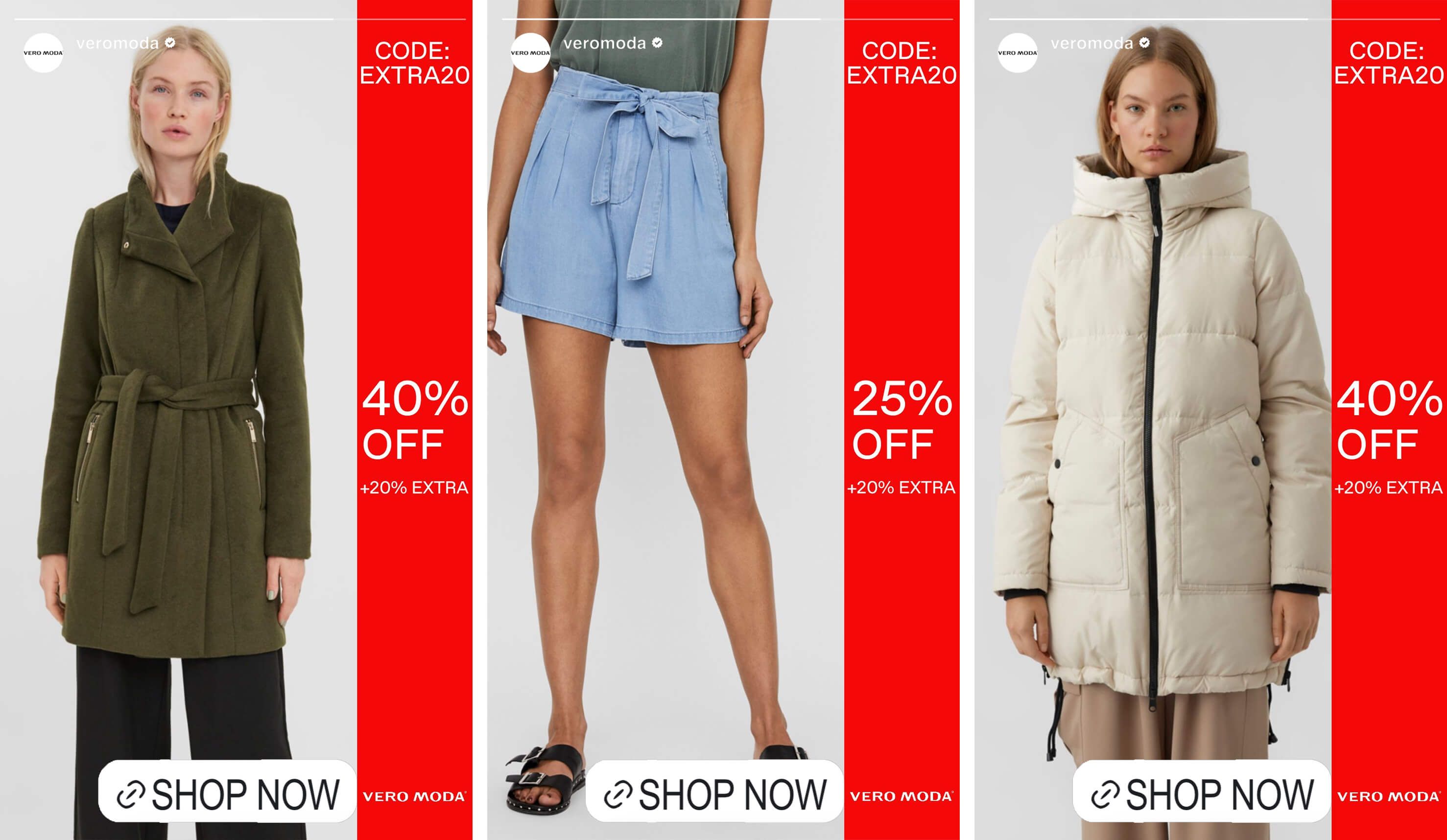Multi-Advertiser ads
June 5, 2025
What Are Multi-Advertiser Ads?
Multi-advertiser ads are a relatively new format introduced by Meta that changes the way ads appear across Facebook and Instagram. Instead of a single brand owning an entire ad slot, this format combines relevant products from multiple businesses into one ad. It is much like walking into a virtual marketplace where several stores are featured side by side, offering you options based on what you’re most likely to be interested in. It allows ads to feel like curated shopping experiences rather than generic promotions.
How They Work on Meta (Facebook & Instagram)
On Meta platforms, multi-advertiser ads pull product data from each brand’s catalog and use machine learning to decide which combinations of products make the most sense for a given user. The system analyzes behaviors, like what someone has browsed, added to a cart, or interacted with, and then serves up an ad that includes multiple businesses offering items that align with those interests. For example, someone shopping for home decor might see an ad showcasing candles from Brand A, throw pillows from Brand B, and wall art from Brand C—all in one scrollable unit.

Difference Between Single-Brand and Multi-Brand Ad Placements
The key difference here is ownership of the ad space. In traditional single-brand ads, one advertiser controls the entire creative and messaging. With multi-advertiser ads, the space is shared, and Meta’s algorithm determines what products and brands are featured together. Each advertiser still pays based on ad performance, but the format itself is coordinated. It is less about one brand telling its story and more about helping users discover what's out there with a personalized, product-first focus.
The Purpose Behind Multi-Advertiser Ads
Enhancing Relevance Through AI-Powered Recommendations
The primary goal of multi-advertiser ads is to enhance relevance. Meta has a wealth of data on what users are looking for, and it leverages this to serve ads that are relevant in the moment. Instead of showing a single product that may or may not match what the user wants, multi-advertiser ads compile a collection of products tailored to that specific person’s tastes and behaviors.
Giving Users More Choices in a Single Ad Slot
Choice is a big deal when it comes to online shopping. Users don’t always know what they want until they see a few options. Thus, multi-advertiser ads do not limit the user to one brand or product per impression. Instead, they’re presented with a variety of options all at once, making it easier to compare, discover, and ultimately decide. It transforms a standard ad unit into a more digital showcase.
Improving Ad Engagement Rates Through Personalization
Personalization has long been one of the secret ingredients to high-performing digital ads, and multi-advertiser ads double down on that. Because each ad is tailored to the individual, engagement tends to increase. People are more likely to click when they feel like the content is relevant to them. How Multi-Advertiser Ads Work on Meta
Where They Appear (Feed, Stories, Reels)
Typically, multi-advertiser ads are distributed across multiple placements on Facebook and Instagram. They appear in the Feed, within Stories, and in Reels - essentially any spot where users are already used to seeing ads and product suggestions. The format is designed to blend in seamlessly with the content people are already engaging with, often referred to as “native ads.”

How Meta Groups Relevant Products and Brands Together
Meta’s algorithm carefully selects items from different advertisers that complement each other or fit a particular theme. For instance, someone browsing for travel gear might see backpacks, noise-canceling headphones, and travel pillows all in one ad unit. The system looks for signals and intent,, such as recent searches, past purchases, or interactions with similar products, to make these groupings feel organic.
Role of Product Catalogs in Multi-Advertiser Ads
Your product catalog is the backbone of this ad format. It’s what feeds Meta the information it needs to populate the ad with your brand’s offerings. The better your catalog (meaning clear images, accurate descriptions, and up-to-date availability), the more likely your products are to be featured. This makes catalog optimization a top priority for any brand looking to participate.
Auction Dynamics: Who Gets Shown and When
Multi-advertiser ads still operate under Meta’s auction system. Brands do not compete to own the entire ad unit. Rather, they compete for inclusion in it. The algorithm weighs a mix of bid amount, ad relevance, and quality scores to determine which brands make the cut. It’s about balancing performance with user experience, ensuring that the ad not only generates revenue for Meta but also keeps people engaged.
Benefits of Multi-Advertiser Ads for E-commerce Brands
Increased Exposure for Relevant Shoppers
For brands, this format presents an opportunity to reach people who may have never encountered them otherwise. Because your product is served alongside similar items, it naturally enters the conversation and earns attention from shoppers who are actively browsing that category.
Better Placement Without Higher Bidding
With multi-advertiser ads, a product can secure prime placement by being relevant and well-presented, without incurring additional costs. This levels the playing field, especially for small or mid-sized brands.
Higher CTR and Engagement Through Product Discovery
The format encourages users to scroll, swipe, and click. It’s like giving them a curated aisle of options rather than a single shelf item. That means more engagement, higher click-through rates, and a greater likelihood that someone will find exactly what they’re looking for.
Potential to Reach New Audiences Without Full Funnel Spend
This format helps brands appear in front of cold audiences without running a full-funnel campaign. Advertisers receive exposure from people who are already interested in their category, without having to invest heavily in awareness-stage content.
Eligibility and Requirements for Multi-Advertiser Ads
Use of Product Catalogs and Dynamic Ads
If you’re already using product catalogs and dynamic ads on Meta, you’re probably already eligible for this format. Multi-advertiser ads are an extension of those tools, pulling directly from the same data sources.
Compliance with Meta’s Advertising Policies
Just like with any Meta ad format, you’ll need to follow the platform’s advertising policies. That includes everything from content standards to the quality of a landing page. Ads that violate policies will not be eligible to appear, and neither will products with missing or misleading information.
Quality Signals That Influence Participation
Meta rewards ads that are well-structured, high-performing, and user-friendly. The better your ad creative, catalog, and engagement history, the more likely you’ll be included in multi-advertiser placements.
Integration with Meta’s Advantage+ and Catalog Tools
Brands using tools like Advantage+ Shopping Campaigns are already aligned with Meta’s best practices, which increases the chance of securing these placements. The more you lean into Meta’s ecosystem, the more the system can work in your favor.
Use Cases for Multi-Advertiser Ads in E-commerce
Promoting Popular or High-Intent Products
If you’ve got bestsellers or items with high conversion rates, this format gives them extra visibility, especially to users already shopping in that category. It’s a great way to let strong products lead the way.
Competing in Crowded Categories (e.g., fashion, electronics)
In saturated markets, multi-advertiser ads help you show up alongside big-name brands. You don’t have to dominate the entire category to earn attention - you just have to be relevant and well-optimized.
Gaining Exposure During Peak Shopping Periods
When shoppers are browsing heavily, such as during holidays, back-to-school, or seasonal sales, this format increases an advertiser’s chance of being seen.
Supporting Retargeting and Discovery Campaigns Simultaneously
One of the unique strengths of multi-advertiser ads is that they can serve dual purposes. They can retarget high-intent shoppers while also introducing new people to your products.
Best Practices for Multi-Advertiser Ads
Optimize Product Feeds with Clean Titles, Images, and Prices
Meta can only work with what you give it. Clean, professional product data increases your chances of being selected—and clicked.
Use High-Quality Creative to Stand Out in Shared Ad Space
You’re sharing the spotlight, so your visuals need to shine. Invest in good imagery and branding so your products don’t blend into the background.
Leverage Custom Labels to Prioritize Hero Products
If you want specific items to take center stage, use custom labels in your catalog to flag them. Meta can use these signals to serve the right products at the right time.
Monitor Performance at the Product Level
Track which products are being served and how they’re performing. This data helps you refine your strategy and improve catalog quality over time.
How to Opt In or Out of Multi-Advertiser Ads
Default Participation for Catalog Advertisers
If you’re already running catalog-based campaigns, you’re opted in by default. No extra setup required.
Steps to Disable Multi-Advertiser Ad Placement (If Desired)
If you’d prefer not to share ad space, you can disable this setting within Meta Ads Manager. Simply navigate to the catalog settings and uncheck the 'Multi-Advertiser Placement' option.
When Opting Out Might Be Strategic
For luxury brands or businesses focused on exclusivity, opting out might make sense. Sharing ad space with competitors could dilute the brand experience, but for most businesses, staying in means more exposure with minimal extra effort.
Discover how Dynamic Ads automatically show the right products to the right people here.
Try Confect for Free
Confect can help you to create great-looking Catalog ads and Dynamic Product ads for Facebook, Instagram, TikTok, Snapchat and Pinterest.
